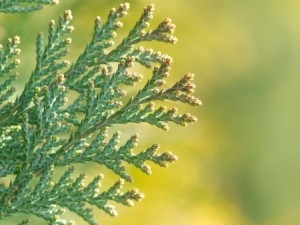 Arborvitaes are conifer, evergreen trees, and they look absolutely stunning in the winter months with fresh snow glistening on the branches. While these trees are low maintenance and can withstand harsh weather conditions, they can be affected by heavy snowfall. In fact, some homeowners are disappointed to see that when they shake off the excess snow from the branches, the arborvitaes are left bent.
Arborvitaes are conifer, evergreen trees, and they look absolutely stunning in the winter months with fresh snow glistening on the branches. While these trees are low maintenance and can withstand harsh weather conditions, they can be affected by heavy snowfall. In fact, some homeowners are disappointed to see that when they shake off the excess snow from the branches, the arborvitaes are left bent.
Since arborvitaes have a multi-stemmed build, they are vulnerable to bent branches due to heavy snow loads. What happens after a heavy snowstorm is that the weight of the snow sits on the branches and causes them to separate from the center of the plant. If the snow is heavy enough, it can cause the branches to break from the center. If you’re not careful, you could have a property with distorted arborvitaes come spring.
What Can I do to Prevent Snow Damage on my Arborvitaes?
Fortunately, there are steps you can take to avoid having bent arborvitaes during the winter season.
- If you know that a winter storm is coming, tie the branches together with rope or twine. (This should be done after the first frost.) Start by fastening the rope at the tip of the tallest branch and then spiral it down the tree. Secure the rope at the base of the tree, and remove it come spring.
- If you’re hit with a snowstorm and your shrubs are not protected, the best approach is to clean off the shrubs as soon as the snow stops. Use a broom to gently knock the snow off the branches. You may need to tie together bent branches to those that are sturdy.
- If the tree has been severely damaged, something more invasive needs to be done. In this case, tie a soft rope around the trunk and anchor it into the ground for several months. Many professionals recommend at least six months. There’s no guarantee that this will work, but it could help.
By taking the proper precautions, you can get your arborvitaes safely through the winter months. Of course, if you’re not sure how to safely straighten the shrubs, be sure to contact a professional landscape company. Trees are heavy and can be dangerous to work with, which is why they often require additional help from a trained and experienced professional .
